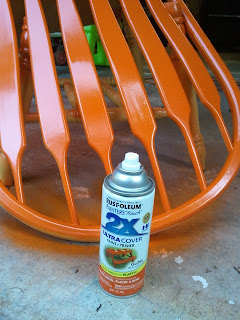I love the look of a butcher block counter top, especially paired with white painted cabinets. This project is one more little piece of the greater puzzle that is our longestcheapestkitchenmakeoverever! As with every other aspect of our kitchen makeover I have been looking for ways to get the look I want while re-purposing items and seeking out salvage sources for materials whenever possible. It is my two birds with one stone approach, both kind to my wallet and kind to the planet.
In researching options for an economical butcher block style counter top I found methods all over the spectrum in terms of expense and degree of difficulty. While I am fairly adventurous when it comes to tackling the DIY unknown, I am well aware of my limits in patience and skills set. Two methods caught my eye that seemed doable and when I stumbled across some bundles of scrap oak flooring at Habitat For Humanity ReStore it was decided which method I would tackle.
I have taken to swinging by my local HFH ReStore now whenever I am in the vicinity because good stuff doesn't last long and you never know what items might have been marked down up to 75% off the already low prices. It was one of these visits that I stumbled upon plastic wrapped bundles of unfinished brand new tongue and groove oak flooring scraps marked down to just $3.50 per bundle. There were about 10 scrap planks per bundle varying in size from 12-18 inches in length. I grabbed the four bundles that they had figuring that it would be more than enough for my counter top project. This small counter top used 2 full bundles ( 20 scrap planks), that is $7.00 in wood materials. Add in 2 tubes of liquid nails ($6 rounded up), a small tin of stain/poly ($6 rounded up), and you have a counter top for roughly $19.00 and I'm pretty sure that you can't beat that with other low cost solutions such as laminate or tile. Although I must admit that I also used a thin plywood base for this project which I had in my scrap pile, so I guess the project could have cost a bit more if I had needed to purchase some plywood.
I should also mention that the base cabinets that this counter top is for were also salvage cabinets from Habitat For Humanity for the bargain of $30, the book case attached on the far right was constructed out of wood I salvaged from some cabinets that we removed above our peninsula.
Here is how we tackled the counter top:
I started by cutting a plywood base to the dimensions of the cabinets and anchored the plywood to the cabinet.
Using liquid nails I began installing the wood flooring on top of the plywood. I chose to lay it starting in the far right corner with the groove sides to the back and right edges. This leaves the tongue sides facing outward. Use a hammer as needed to set the planks tight.
You will end up with some uneven edges on the left end, I trimmed those with a saw after they were set.
You might have some high low spots at the plank joints, so sand those smooth. I sanded with a rough grit to level out the high low spots then finished off with a fine grit to give a very smooth finish. I shaped the sharp corner with the sander to create a smooth rounded corner for safety and aesthetics. I had originally planned to trim off the tongue for a straight edge and then add a trim piece. My husband said he liked the shape of the tongue edge and that gave me a convenient out as my confidence was wavering as I faced the task of achieving a straight edge. By leaving the tongue edge it gives the appearance of a decorative router edge.
After the boards were sanded smooth and wiped down with a damp cloth, it was time to stain. I opted to go with an all-in-one stain and poly in Pecan with a satin finish.
The Pecan stain gave the oak a little more warmth and depth without being too dark. Just the right amount of contrast to the white cabinets.
I will be adding a thin strip of white trim where the cabinet base and plywood meet for a more finished look. I am happy with the look of the white and butcher block.
Well I hope this simple and budget friendly project will inspire you to re-think how you see materials. Flooring isn't just for floors. Thank you for stopping by!















































